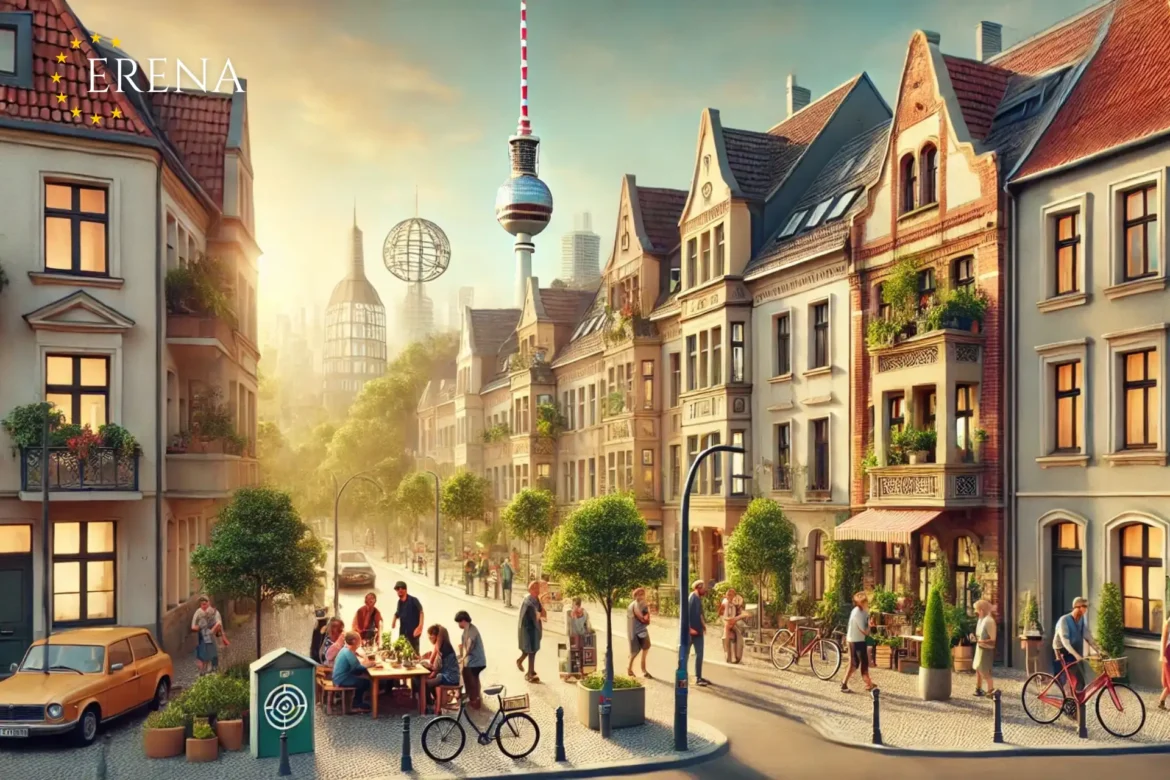Milieuschutz, or social conservation areas, are a crucial tool in Berlin’s urban policy aimed at protecting the social structure of neighborhoods and ensuring affordable housing. Against the backdrop of rising rental prices and gentrification, this measure has become a key strategy to prevent the displacement of low-income residents and preserve the cultural diversity of urban districts. This text examines the specifics of Milieuschutz, how it works, its advantages, disadvantages, and its impact on Berlin’s development.
What is Milieuschutz?
Milieuschutz refers to special zones where strict restrictions on property changes are implemented under § 172 of the German Building Code (BauGB). The purpose of these zones is to maintain the social balance of neighborhoods and prevent their transformation into exclusive residential areas.
Key objectives of Milieuschutz include:
• Protecting local residents from displacement due to rising rents.
• Preserving affordable housing for various social groups.
• Preventing the widespread conversion of rental units into high-end apartments.
• Strengthening the social cohesion of neighborhoods.
Milieuschutz covers dozens of Berlin districts, including well-known areas like Kreuzberg, Prenzlauer Berg, Neukölln, and other popular locations.
How Does Milieuschutz Work?
Milieuschutz implements a range of measures that restrict property owners’ rights within designated areas. Key mechanisms include:
1. Control of Modernization: Property owners cannot carry out expensive modernizations, such as installing elevators, jacuzzis, or other upgrades that significantly increase rental prices. Only necessary repairs to maintain the property’s current condition are allowed.
2. Restrictions on Ownership Conversion: The conversion of rental apartments into privately owned units (Eigentumswohnungen) requires special municipal approval. This measure aims to prevent the reduction of available rental housing.
3. Right of First Refusal: Municipal authorities have the right to purchase properties put up for sale to preserve them as affordable housing for local residents.
4. Community Involvement: Decisions to establish Milieuschutz zones are made following consultations with local residents and assessments of their needs.
Advantages of Milieuschutz
Milieuschutz brings significant benefits to the city and its residents:
1. Preservation of Affordable Housing: Limiting modernizations and restricting property conversion helps maintain low rental rates.
2. Prevention of Gentrification: Restrictions on redevelopment and property repurposing protect neighborhoods from becoming exclusive areas accessible only to affluent residents.
3. Strengthening Social Structures: The measures help preserve population diversity, preventing the displacement of low-income residents.
4. Transparency and Participation: Active involvement of residents in decision-making fosters trust in authorities and contributes to sustainable urban development.
Disadvantages and Criticism of Milieuschutz
Despite its positive impact, Milieuschutz faces several challenges and criticisms:
1. Challenges for Property Owners: Restrictions reduce owners’ flexibility in managing their properties and limit their ability to increase property value.
2. Financial Burden on the City: The right of first refusal requires significant resources, which can strain Berlin’s budget.
3. Limited Market Impact: Critics argue that Milieuschutz only slows down gentrification rather than addressing its root causes.
4. Administrative Complexity: Managing Milieuschutz zones demands substantial administrative effort, leading to potential delays in decision-making.
The Impact of Milieuschutz on Berlin’s Development
Milieuschutz has a significant impact on Berlin’s urban landscape. These zones help keep the city accessible to diverse social groups rather than catering solely to affluent investors. However, to ensure long-term success, several aspects need to be addressed:
1. Increased Funding: Additional budgetary resources would enable Berlin to more actively exercise its right of first refusal and preserve affordable housing.
2. Development of New Housing: Building affordable housing outside Milieuschutz zones would alleviate pressure on the existing housing stock.
3. Regulatory Flexibility: Revisiting rules and tailoring them to specific neighborhood needs would improve their effectiveness.
4. Partnerships with Property Owners: Providing financial incentives and subsidies could encourage voluntary adherence to Milieuschutz principles.
Examples of Successful Milieuschutz Implementation
Some Berlin neighborhoods illustrate how Milieuschutz can preserve social structures. For instance, in Prenzlauer Berg, the measures have helped limit rent increases and maintain a substantial amount of rental housing despite high investor interest. In Kreuzberg, Milieuschutz has played a crucial role in safeguarding the district’s cultural diversity.
The Future of Milieuschutz
As Berlin’s population grows and housing demand increases, the importance of Milieuschutz will continue to rise. However, for this measure to remain effective, it is necessary to:
• Regularly review zone boundaries and update regulations.
• Raise awareness among residents and property owners about the benefits of Milieuschutz.
• Integrate Milieuschutz with other urban development programs.
Conclusion
Milieuschutz plays a vital role in preserving affordable housing and ensuring social equity in Berlin. Despite criticism and limitations, this policy remains a key tool for combating gentrification and protecting the interests of local residents. For continued success, it is essential to ensure flexibility, sufficient funding, and close collaboration between authorities, residents, and property owners. In this way, Milieuschutz can further evolve as an effective mechanism of urban policy, fostering a city that accommodates everyone.
Milieuschutz (Social Conservation Areas) in Berlin
613

